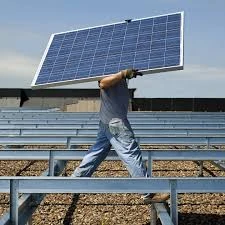cost to add solar panels
The Cost to Add Solar Panels A Comprehensive Overview
As the global push for renewable energy intensifies, many homeowners and businesses are considering solar panels as a viable solution for their energy needs. The decision to transition to solar energy, while appealing for its environmental benefits, often hinges on understanding the associated costs. This article aims to provide a comprehensive overview of the cost factors involved in adding solar panels to a property, helping potential adopters make informed choices.
The initial cost to add solar panels can significantly vary based on several factors including location, system size, the type of solar panels chosen, and installation complexities. On average, homeowners can expect to pay between $15,000 and $25,000 for a standard residential solar panel system before any tax credits or incentives. The typical system size is around 5kW to 10kW, which correlates with the energy needs of average homes.
One of the most notable incentives that can reduce the upfront cost is the federal solar investment tax credit (ITC). As of 2023, the ITC allows homeowners to deduct 30% of the cost of installing a solar energy system from their federal taxes. This significant reduction can make solar more financially viable for many. Additionally, various states offer their own incentives, such as rebates or property tax exemptions, further decreasing the overall investment required.
cost to add solar panels

When contemplating the cost to add solar panels, it is crucial to also consider long-term savings. Solar panels can drastically reduce or even eliminate electricity bills, depending on the system size and local energy rates. On average, homeowners may save anywhere from $10,000 to $30,000 over the lifespan of their solar panel system, which typically lasts 25 years or more. This long-term savings can offset the initial investment and provide a strong economic argument for making the switch to solar.
Financing options also play a critical role in the decision-making process. Many companies offer solar loans, leases, and Power Purchase Agreements (PPAs) which allow homeowners to install solar panels with little to no upfront cost. These options can help spread out the cost over time while still benefiting from immediate energy savings. Understanding these financial tools is essential for making solar energy accessible to a broader audience.
Furthermore, it is important to evaluate the maintenance costs of solar panels, which are relatively low. Once installed, solar panels typically require minimal upkeep, such as occasional cleaning and inspections to ensure optimal performance. Most manufacturers offer warranties ranging from 20 to 25 years, which can provide peace of mind regarding potential repair costs.
In conclusion, while the cost to add solar panels can seem daunting at first, a combination of federal and state incentives, long-term savings, financing options, and low maintenance requirements makes it an increasingly attractive investment. By thoroughly researching these factors, homeowners and businesses can make empowered decisions that not only benefit their wallets but also contribute to a more sustainable future. As technology advances and more people recognize the advantages of solar energy, the potential for a cleaner, more efficient energy landscape becomes increasingly attainable.
-
Understanding the Advantages of Solar String Inverters for Your Energy SystemNewsApr.29,2025
-
Choosing the Right PV Inverter: A Comprehensive GuideNewsApr.29,2025
-
The Future of Solar Power: Exploring Bifacial Solar PanelsNewsApr.29,2025
-
The Complete Guide to Solar Panels: Efficiency, Cost, And InstallationNewsApr.29,2025
-
The Best Options for Efficiency and Cost-EffectivenessNewsApr.29,2025
-
Harnessing the Power of Off-Grid Solar Inverters for Energy IndependenceNewsApr.29,2025







